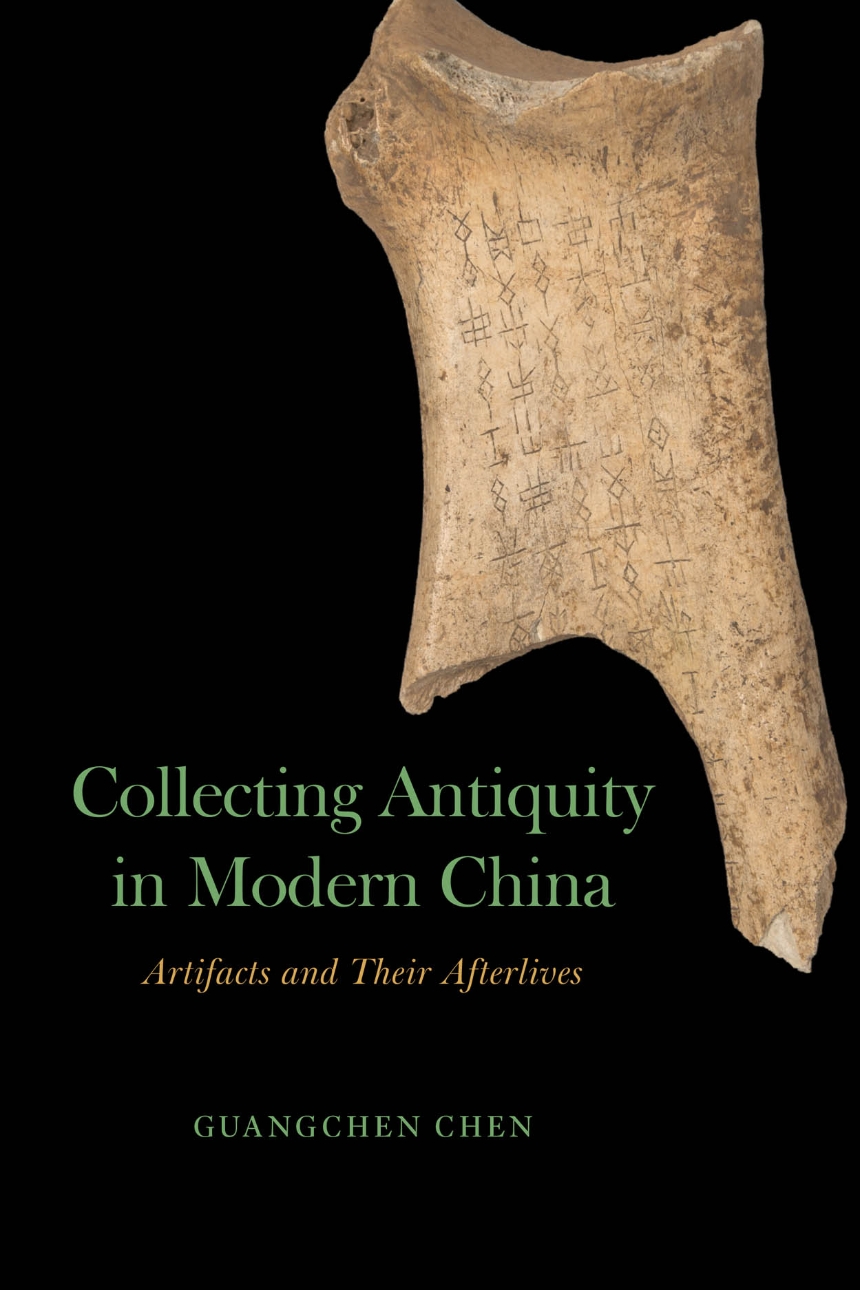Collecting Antiquity in Modern China
Artifacts and Their Afterlives
Collecting Antiquity in Modern China
Artifacts and Their Afterlives
In this book, Guangchen Chen argues that discerning collectors used antiquities to upend dominant discourses on history and cultural memory in twentieth-century China. Examining four categories of ancient artifacts—“carving” (oracle bones), “rubbing” (imprints of inscriptions and books), “brushing” (calligraphy), and “weaving” (textiles and costumes)—Chen explains how their modern (re)emergences changed our understanding of the relationship between tradition and modernity, textuality and materiality, and the very meaning of “Chineseness.”
Chen considers intellectuals such as Wang Yirong, Liu E, Luo Zhenyu, Wang Guowei, and Chen Mengjia, who played a pivotal role in the oracle bones’ modern reception. He also looks to major literary figures including Lu Xun, whose engagements with textual remnants of the past inspired his critique of Chinese culture; Guo Moruo, whose work on the calligraphic masterpiece Lantingxu contributed to the cultural-political climate that sparked the Cultural Revolution; Shi Zhecun, whose interest in inscriptions on ancient stelae helped him to hold fast to intellectual integrity in the face of political pressure; and Shen Congwen, whose obsession with ancient textiles saved him from committing suicide after his writing fell out of favor. These antiquarians used their collections as a strategy to synchronize historical time and to challenge two dominant yet contrasting ideologies in modern China: a regressive idealization of antiquity and an unquestioning trust in linear progress. During this turbulent period, long-lost artifacts came to function as omens, warnings, and revelations from another time, generating new meanings that were uniquely relevant to the present.
256 pages | 15 halftones | 6 x 9
Asian Studies: East Asia
Literature and Literary Criticism: Asian Languages
Table of Contents
Introduction
The King Loses His Bow
Collecting Versus Storytelling
The Materiality of Wen
1. Carving
Wang Yirong Visits the Pharmacy
Luo Zhenyu Goes into Exile
Wang Guowei Turns from Schopenhauer to the Shang Kings
Chen Mengjia Stumbles Upon a Manuscript
2. Rubbing
Before Zhou Shuren Became Lu Xun
The Indeterminacy of Textual Scholarship
Lu Xun Transcribes Steles
Shi Zhecun, Too, Transcribes Steles
3. Brushing
353: A Late Spring Party
1965: The Lantingxu Debate
When Antiquarianism Meets Historical Materialism
4. Weaving
The Death of a Writer
The Birth of a Collector
Artifacts as Sentient Structures
The Aesthetics and Politics of Design
Epilogue: Who Owns China’s Past?
Acknowledgments
Glossary
Notes
Index
